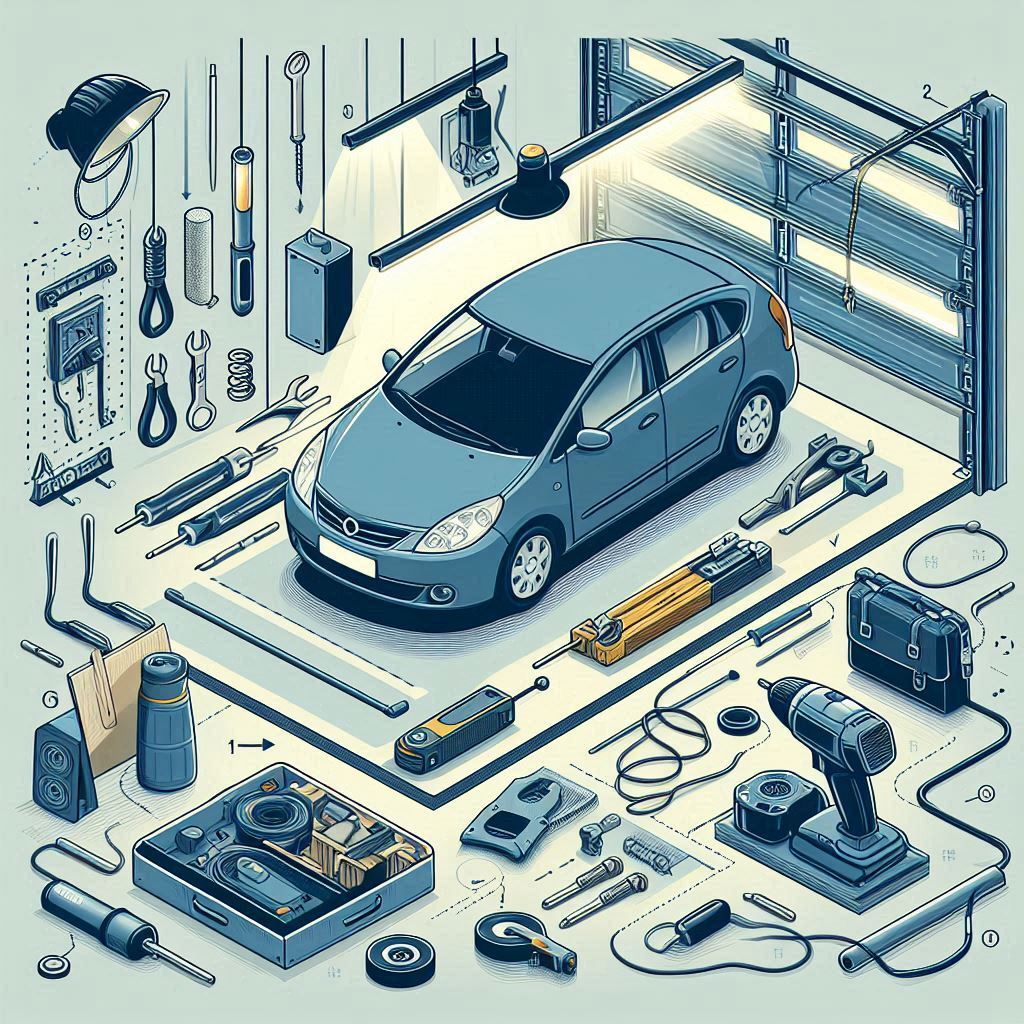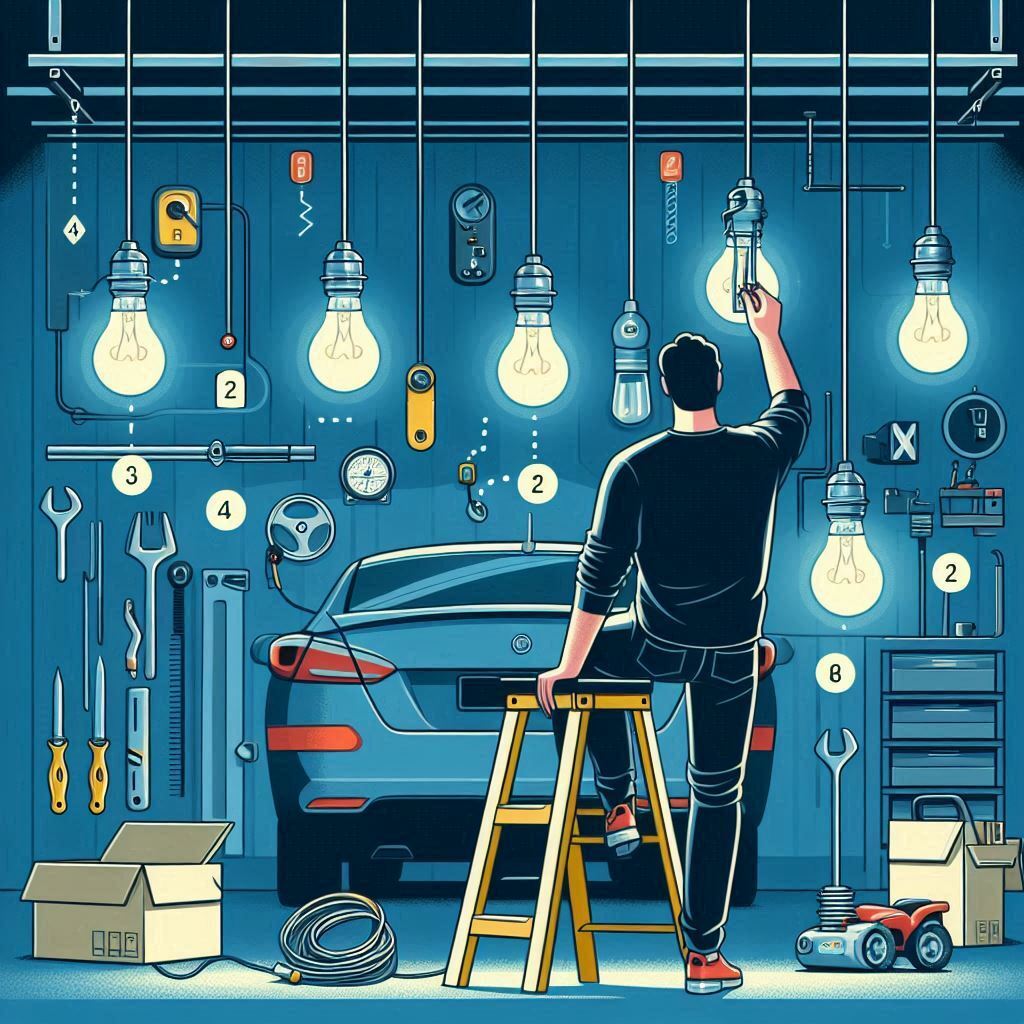
Proper lighting in your garage is essential for both functionality and safety. Whether you use your garage as a workspace, storage area, or just for parking, the right lighting can make a huge difference. Here’s a guide to help you make the most of your garage lighting setup.
Garage lighting guide

1. Assess Your Lighting Needs
The first step is understanding what you use your garage for. If you primarily use it for parking and storage, basic lighting may be enough. However, if you use it as a workshop or a place to work on vehicles, you’ll need brighter, task-oriented lighting. Consider what activities take place and how much light is required for each area.
2. Choose the Right Type of Lighting
There are several types of lighting fixtures to choose from, each serving different purposes:
- Ambient Lighting: This is the general lighting that illuminates the entire garage. LED or fluorescent ceiling lights are a great option as they provide bright, energy-efficient light that covers a large area.
- Task Lighting: For areas where you do detailed work, like a workbench or tool area, install task lighting. Adjustable LED shop lights or under-cabinet lights can help focus light on specific tasks, reducing strain on your eyes.
- Accent Lighting: While not essential, accent lighting can add style and functionality to your garage. Wall sconces or small LED strips around storage areas or along walkways can improve visibility and add a professional touch.
3. Consider Motion-Activated Lights
Motion-activated lights are a great option for garages, especially near entrances or in areas you pass through regularly. These lights automatically turn on when they detect movement, which is convenient when your hands are full or you’re entering the garage in the dark. They also help save energy since they only light up when needed.
4. Energy Efficiency
When selecting lighting, choose energy-efficient options like LED lights. LEDs last much longer than traditional bulbs and consume less energy, helping you save on electricity bills. They’re also more durable and work well in garages where temperature and humidity can fluctuate.
5. Optimize Lighting Placement
To ensure your garage is well-lit, pay attention to where the lights are placed. Ceiling lights should be evenly distributed to avoid dark spots. Task lighting should be installed directly above or beside work areas to provide adequate illumination. If you have shelves or cabinets, consider installing lights under them to brighten the space and make tools or items easier to find.
6. Control Options
Lastly, think about how you want to control your garage lighting. You can opt for standard wall switches, dimmer switches for adjustable brightness, or even smart lighting that can be controlled through your phone or voice commands. Smart lighting systems can also be programmed to turn on or off automatically based on your schedule.
What Type of Lighting is Best for a Garage?

When it comes to garage lighting, LED lights are the best choice for most situations due to their brightness, energy efficiency, and long lifespan. For general illumination, LED ceiling fixtures or fluorescent lights effectively light up the entire space, creating a well-lit environment for parking and storage.
If you have a workbench or perform detailed tasks, adjustable LED shop lights or under-cabinet lighting can provide focused illumination where you need it most.
Additionally, motion-activated lights are excellent for entryways or areas where you frequently move, as they automatically turn on when they detect movement, ensuring safety and convenience. Overall, LED lights offer versatility and reliability, making them the ideal lighting solution for garages of all types.
How Many Lights Do I Need for a 2-Car Garage?
Determining the number of lights needed for a 2-car garage depends on several factors, including the size of the garage, the type of lighting used, and the activities taking place in the space.
A typical 2-car garage measures about 400 to 600 square feet, so a good rule of thumb is to aim for approximately 50 to 75 lumens per square foot for adequate illumination. For a garage of this size, you would generally need around 4 to 8 light fixtures, depending on their brightness.
Using LED fixtures can help reduce the number of lights needed while still providing ample illumination. For example, if you choose high-output LED lights, you might only need 4 fixtures, strategically placed to eliminate shadows and dark spots.
Additionally, consider adding task lighting in areas where detailed work is done, such as above a workbench or tool area. This combination ensures your garage is bright and functional for various activities.
Conclusion
A well-lit garage is both practical and safe. By assessing your needs, choosing the right types of lighting, and placing them effectively, you can transform your garage into a functional, well-lit space. Whether you’re working on projects or just need better visibility for parking and storage, the right lighting can make a huge difference.
FAQs
Q1. What type of lighting is best for a garage?
A1. The best type of lighting for a garage is LED lighting. LEDs provide bright illumination, are energy-efficient, and have a long lifespan, making them ideal for general and task-specific lighting. They are versatile and can be used for ambient lighting, task lighting, and even motion-activated lights for convenience and safety.
Q2. How many lights do I need for my garage?
A2. For a typical 2-car garage, you’ll generally need about 4 to 8 light fixtures to achieve optimal brightness, depending on the size of the space and the lumens produced by each fixture. Aim for approximately 50 to 75 lumens per square foot to ensure adequate illumination. Adjust the number of fixtures based on specific areas where more light is needed, such as workspaces.
Q3. Can I use regular light bulbs in my garage?
A3. Yes, you can use regular light bulbs in your garage, but it’s recommended to choose energy-efficient options like LED or fluorescent bulbs. Regular incandescent bulbs may not provide sufficient brightness and can consume more energy, leading to higher electricity bills. LED bulbs are preferred for their longevity and efficiency.
Q4. Should I install motion-sensor lights in my garage?
A4. Installing motion-sensor lights in your garage is a great idea, especially near entrances and walkways. These lights automatically turn on when they detect movement, providing convenience and safety when entering or exiting the garage, especially when your hands are full or it’s dark outside.
Q5. How can I improve lighting in dark areas of my garage?
A5. To improve lighting in dark areas of your garage, consider adding task lighting such as under-cabinet lights or adjustable LED fixtures focused on specific work areas. Additionally, using brighter LED bulbs and ensuring fixtures are evenly spaced can help eliminate shadows and dark spots, creating a more functional and well-lit space.
